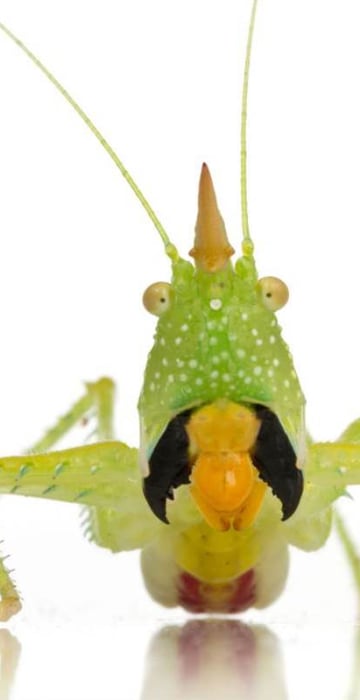
Science News
Tropical Eden revealed: Suriname's strange species
Sample the new and unusual species that were spotted during Conservation International's expedition to southeastern Suriname.
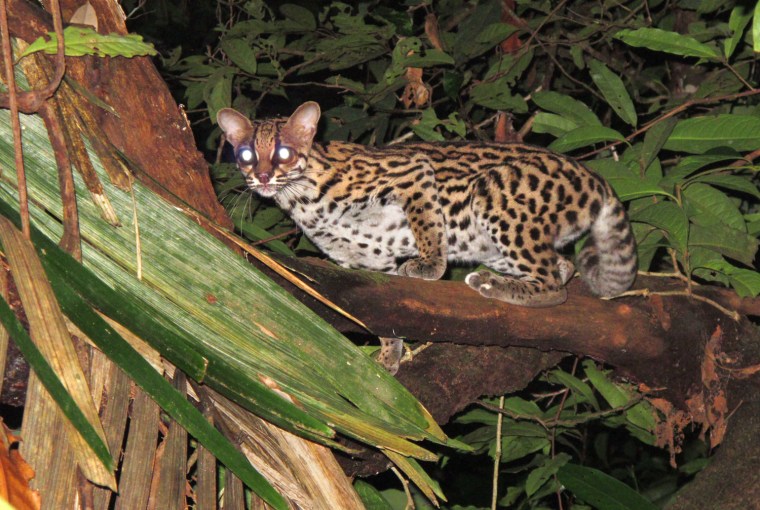
Spotting Suriname's species
Scientists hit the jackpot when they traveled to Suriname, a country on South America's northeast coast, to hunt for rare and new creatures. The assessment team, led by Conservation International, cataloged 1,378 species in a mountainous region of southeastern Suriname - including 60 species that are thought to be new to science. In this photo, a margay (Leopardus wiedii) holds still on its forest perch.
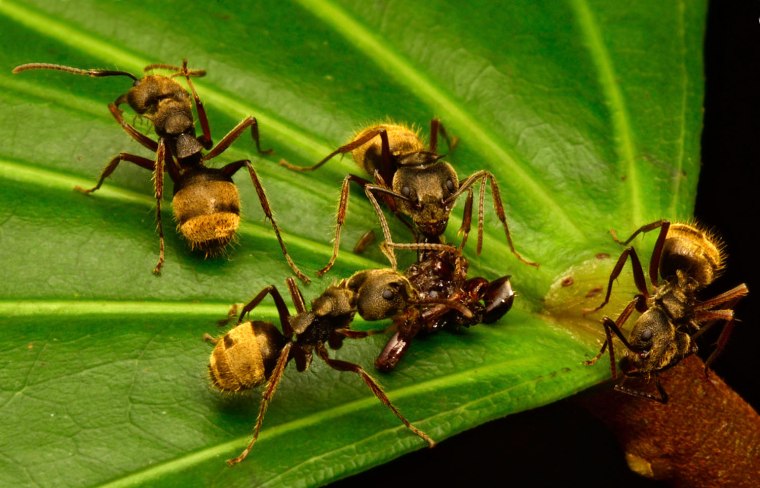
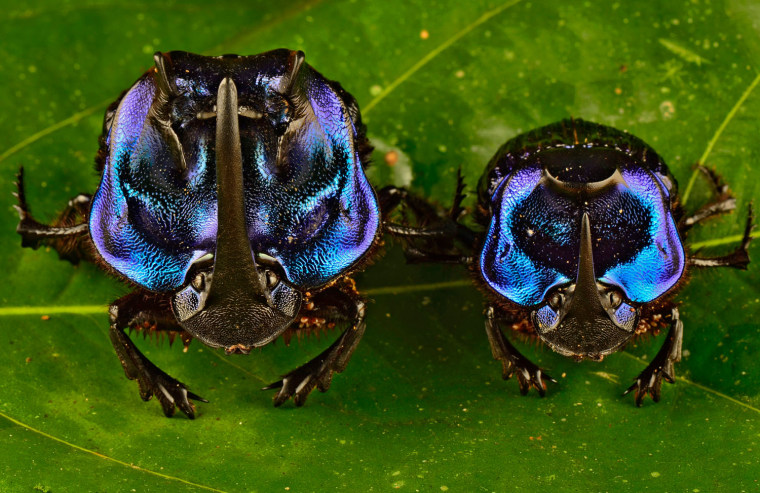
Big blue beetles
Coprophanaeus lancifer is the largest of all South American dung beetles. Despite its name, this species feeds more frequently on dead animals than on dung. Both males and females have long horns on their heads, which they use during intense battles with other individuals of the same sex. The vast difference in adult body size seen here is primarily determined by how much food was available to the developing larva.
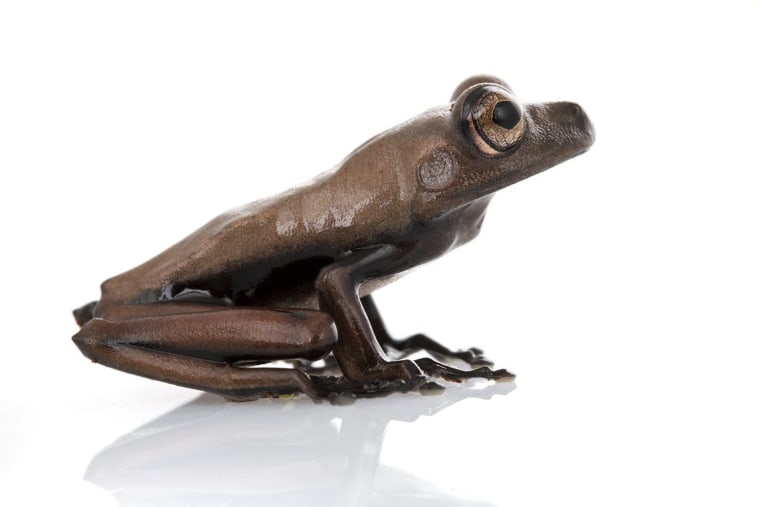
Fresh cocoa
The "cocoa" tree frog (Hypsiboas sp.), like other amphibians, has semi-permeable skin that makes it highly sensitive to changes in the environment, especially climate and water. This particular frog species may be new to science. More than 100 species of frogs are thought to have gone extinct over the past three decades, so the discovery of a new species is especially heartening.
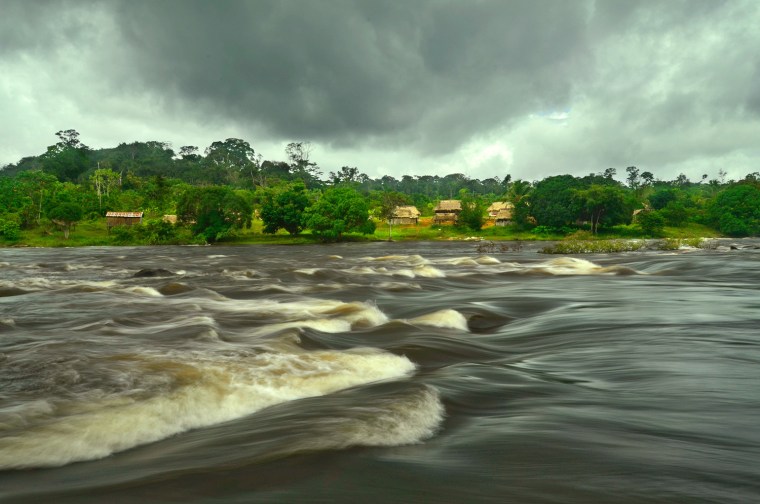
Rough rapids
A storm moves over the rapids of the Palumeu River by the small settlement of Kampu in southeast Suriname. The science team's first base camp was much farther upstream, where the Palumeu River was so narrow, scientists could cross it via a fallen tree. The river is a part of the Upper Palumeu River Watershed, close to the border with Brazil, where the team conducted its surveys in 2012.
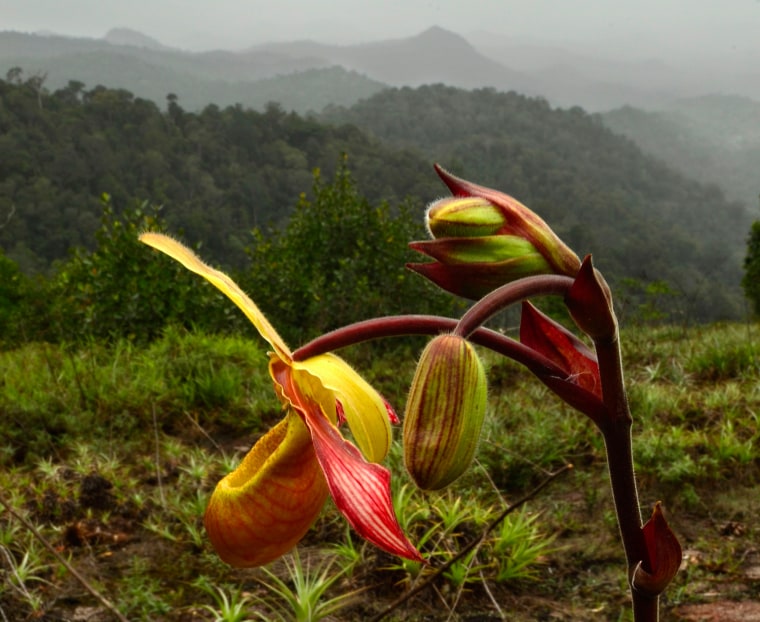
Sensitive flower
This orchid (Phragmipedium lindleyanum) is one of several rare and beautiful orchid species found on a mountaintop of the previously unexplored Grensgebergte Mountains. Many rare species occur on these distinctive granite outcroppings in Suriname. Mountaintop species like this one are highly vulnerable to climate change, since they are unable to migrate upslope in response to warming temperatures.
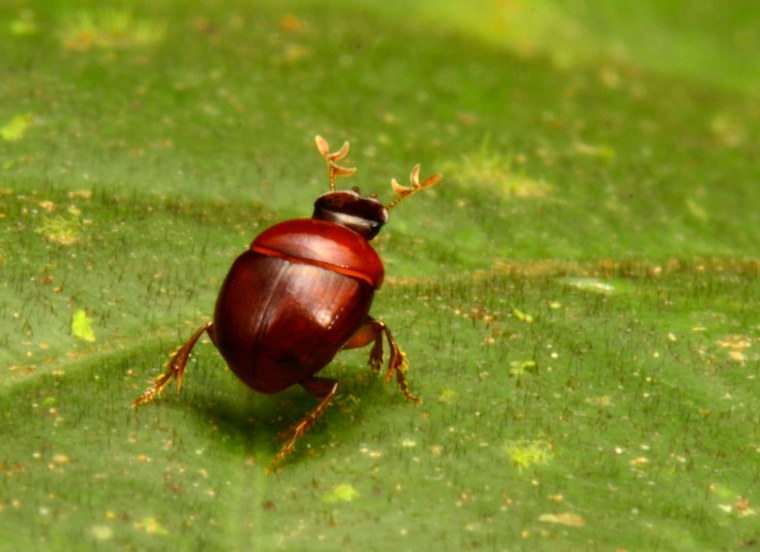
Lilliputian beetle
The tiny "Lilliputian beetle" (Canthidium cf. minimum) probably represents a new species to science, and perhaps even a new genus. At just a tenth of an inch (2.3 millimeters) in length, it may be the smallest dung beetle in the Guiana Shield, and perhaps the second smallest of currently described species in South America. Its antlerlike antennae provide an acute sense of smell.
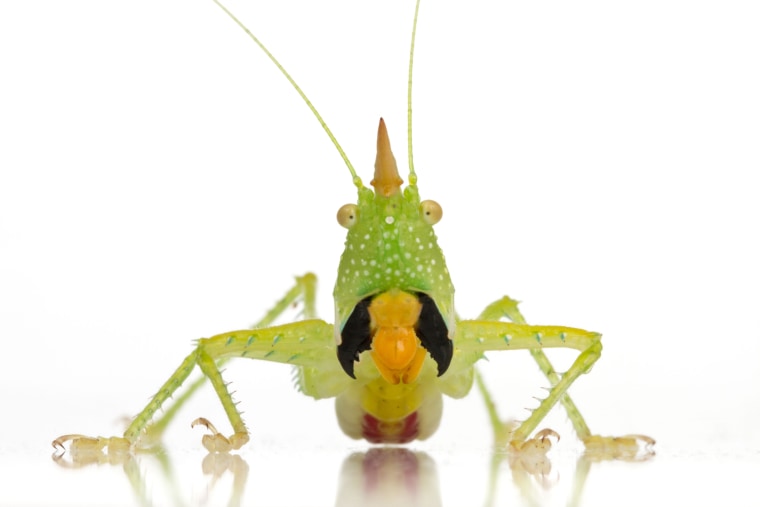
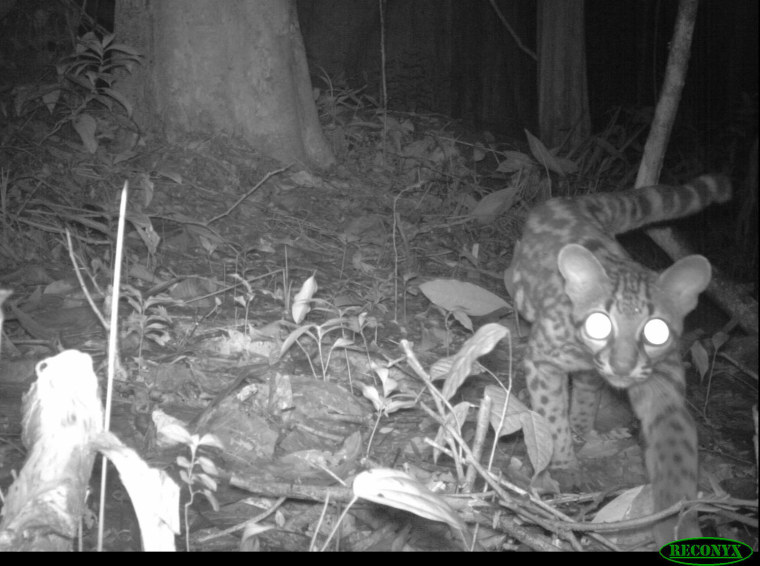
Night watch
Because many mammals are so elusive and difficult to observe in the forest, scientists use automated camera traps to record them. Here, a margay curiously inspects one of the camera traps. The camera uses an infrared sensor to detect passing animals, triggering the shutter to snap a picture. Out of the 24 large mammal species encountered on the expedition, many were detected only by using camera traps, including the puma.
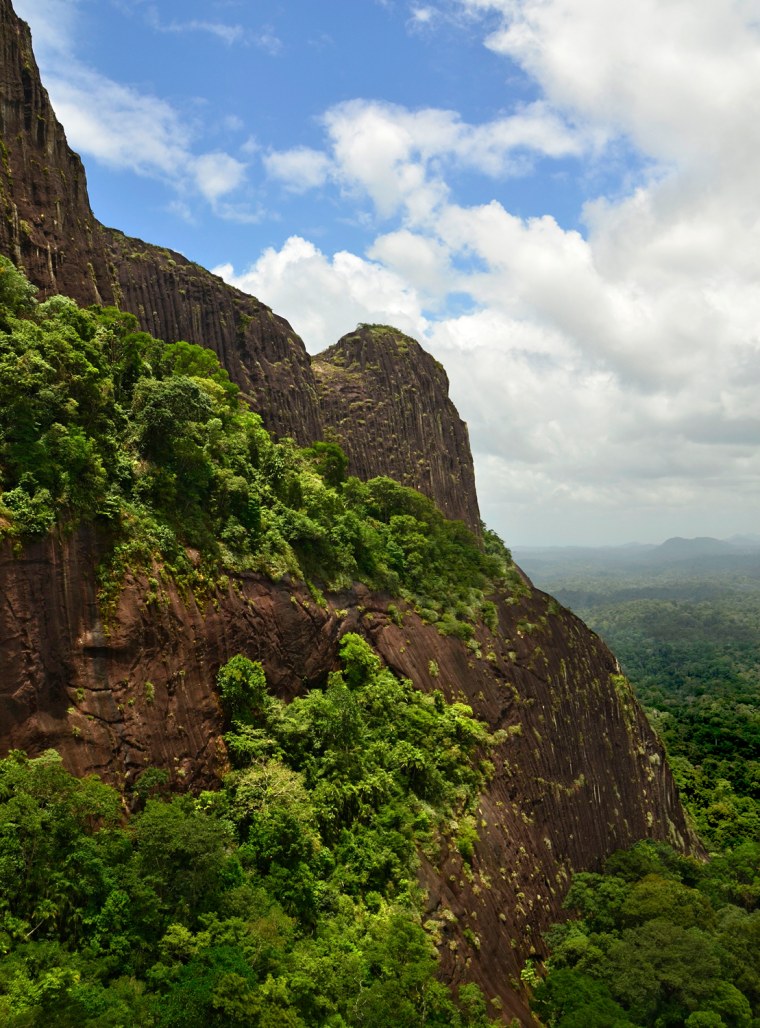
A gold mine of granite
An outlook on Kasikasima, a unique granitic mountain formation that rises over 2,300 feet (700 meters) above the rainforest, provides a commanding view of its surroundings. Scientists found several unusual species on this mountain, including some species of water beetles that were new to science. A trail climbing one side of the mountain provides an opportunity for adventurous ecotourists to immerse themselves in nature, while also providing a sustainable source of income for the local community.
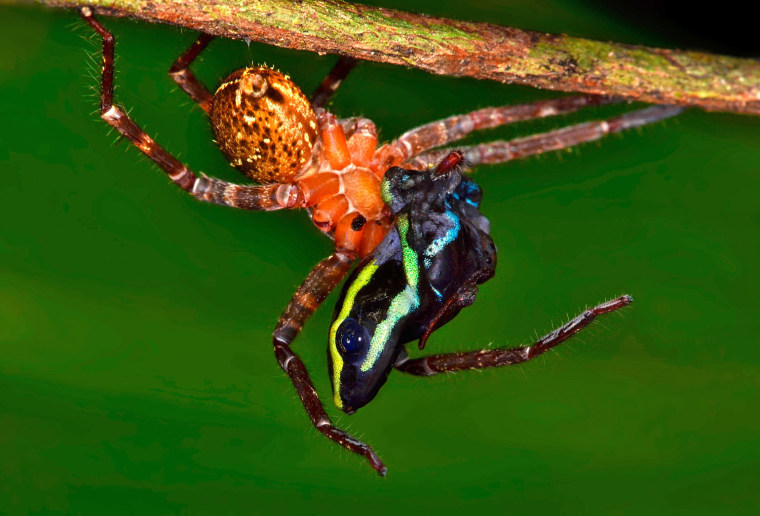
It's a spider-eat-frog world
Southeastern Suriname may be a "tropical Eden," but that doesn't mean it's a paradise for every one of its creatures. This photo, taken during one of the scientists' strolls at night, shows a wolf spider eating a poison-dart frog.
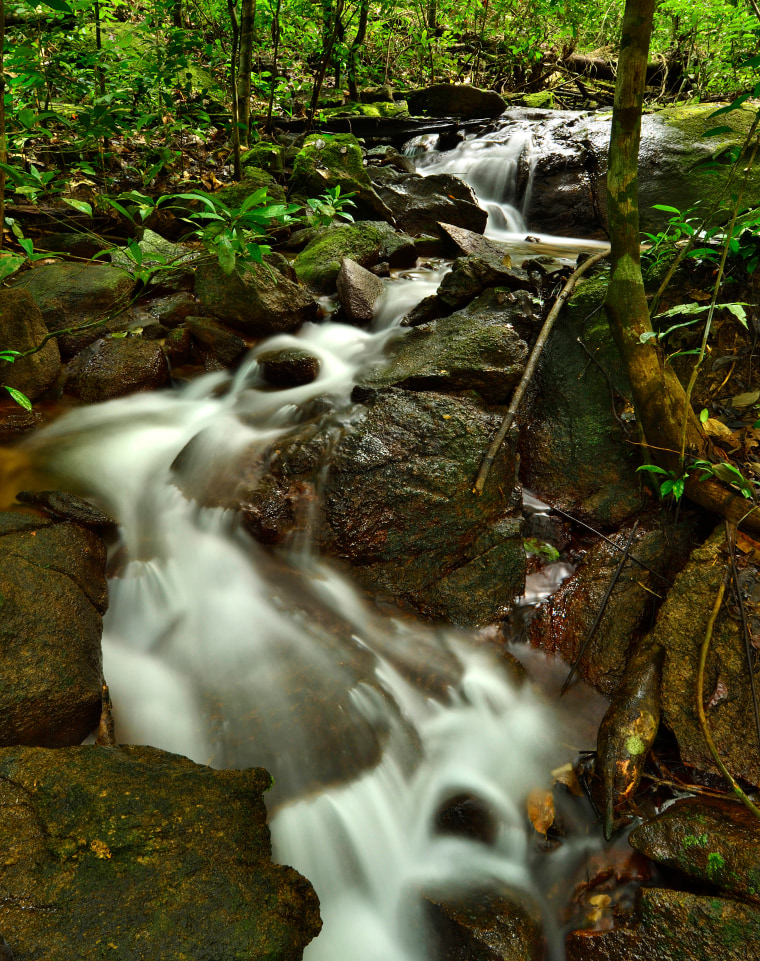
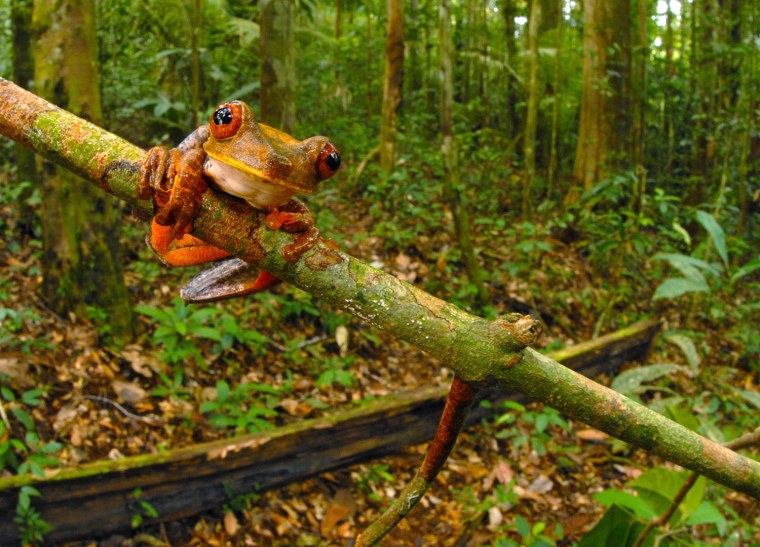
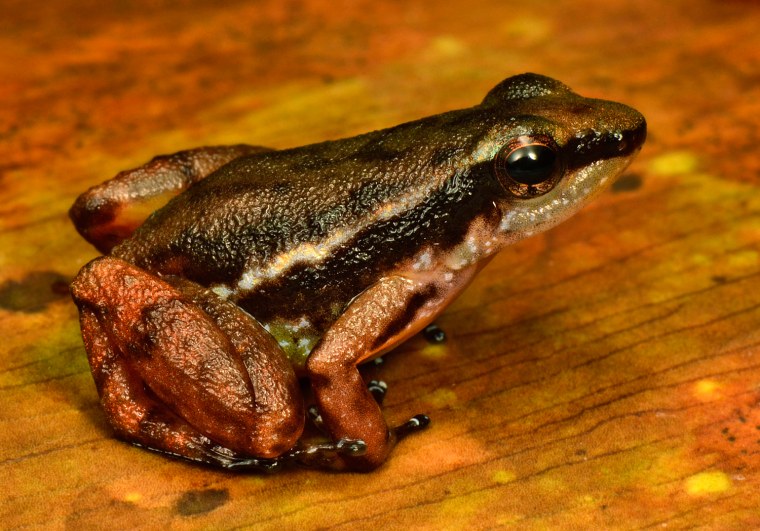
Frog of a different color
The unusual dorsal coloration of this poison dart frog (Anomaloglossus sp.) differs from a similar species (Anomaloglossus baeobatrachus) found at the same sites, suggesting that it may represent a species new to science. Poison dart frogs are famous for the often powerful toxins they secrete. This poison is used by local people to hunt for food, but also holds enormous potential to yield new medicines to aid the global population. Chemicals from some poison dart frogs have already been used to develop painkillers, muscle relaxants and heart stimulants.
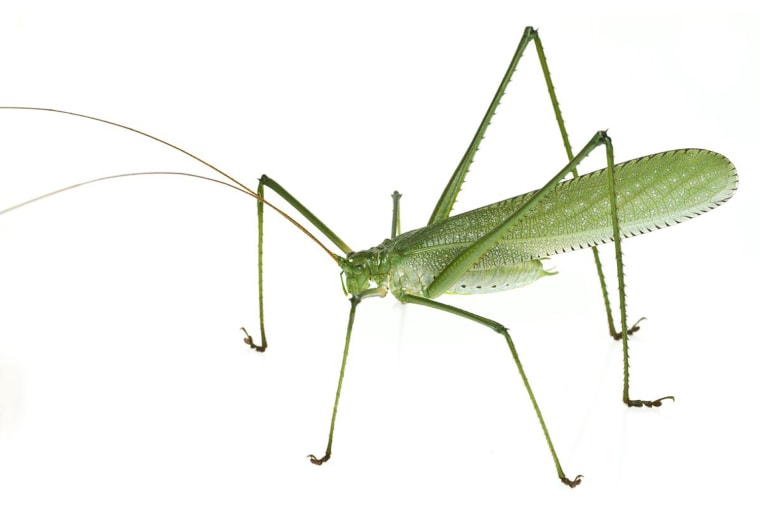
Don't mess with this katydid
This katydid species (Pseudophyllinae: Teleutiini) is so strange that it actually represents an entirely new genus to science. Its unusually long, gangly legs are covered in sharp spines that help to deter predators. Many katydids are sensitive to habitat disturbance, and the species found on this expedition indicate that the region is pristine.
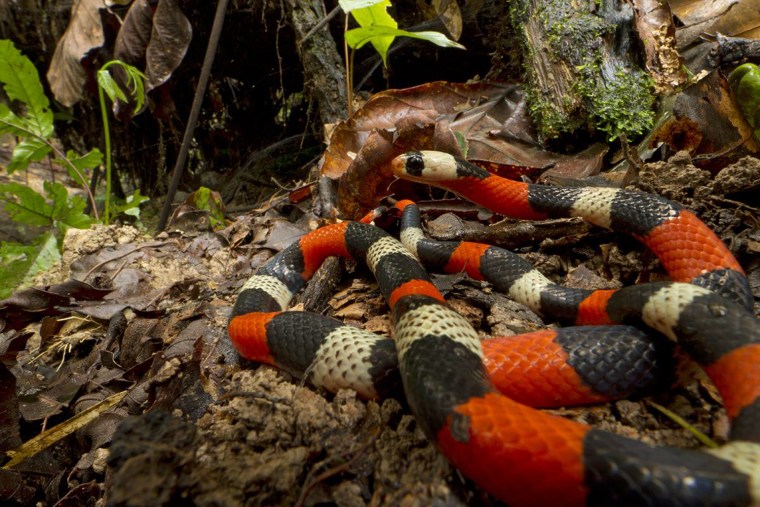
Ssssneaky snake
The bright colors of the false coral snake (Erythrolamprus aesculpi) lend it protection from predators, even though it lacks the deadly venom of the true coral snake. This is one of the 19 snake species encountered on the expedition, which included a true coral snake, a deadly fer-de-lance viper, and a species (Pseudoboa sp.) potentially new to science.
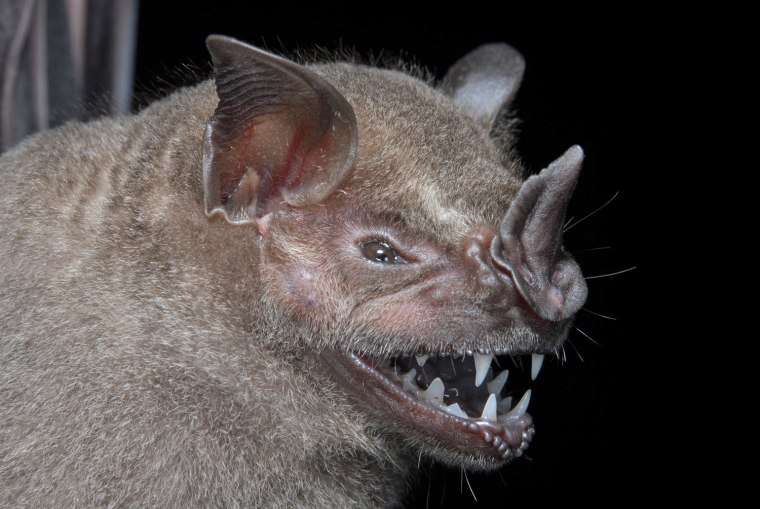
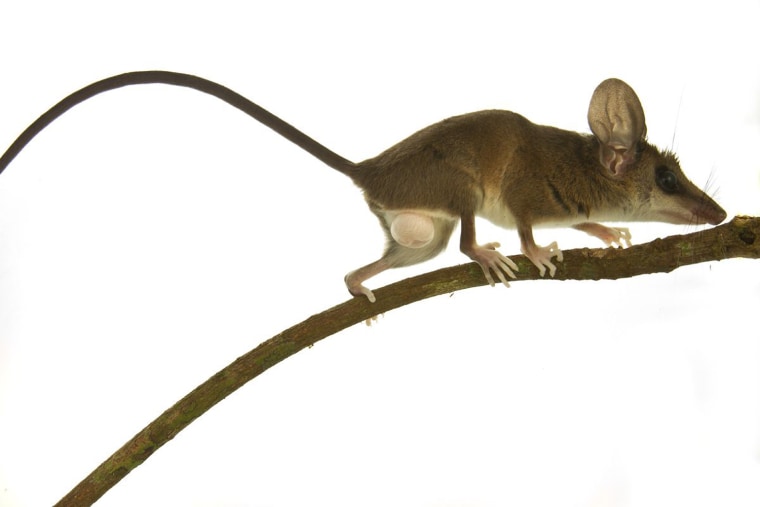
Playing possum
The Delicate Slender Opossum (Marmosops parvidens) is an arboreal species that eats insects and fruit. This species is indicative of pristine, primary forests, and is one of the 39 species of small mammals (rats, bats, opossums) discovered on the expedition. Many small mammal species are important for dispersing seeds and ensuring forest regeneration.
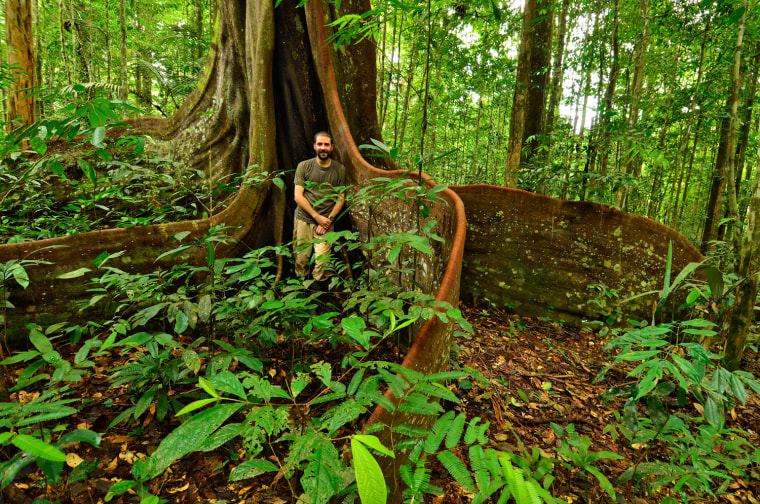
In a tree's embrace
The purpleheart tree (Peltogyne venosa) forms massive buttress roots that provide support, especially during extreme storms and flooding events. Purpleheart trees are prized for their dense, hard wood, and the fact that this tree has survived suggests an absence of logging in the area. In this picture, Trond Larsen, director of Conservation InternationaI’s Rapid Assessment Program, stands amid the buttress roots.
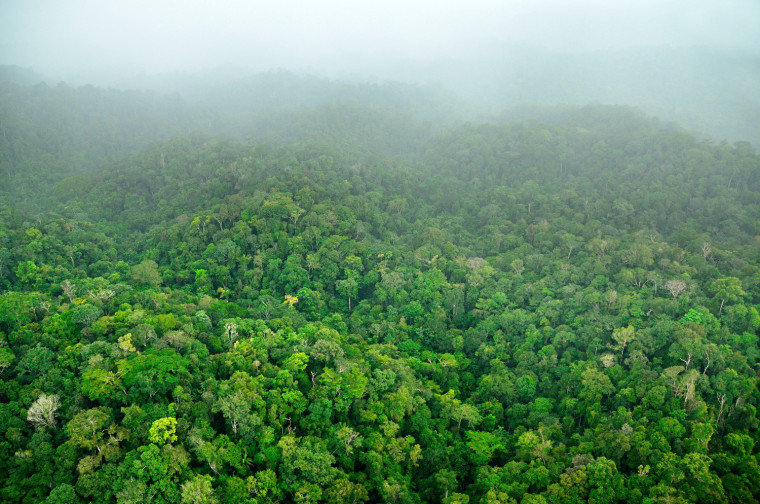
Cloud country
The mountains and extensive intact forests of southeastern Suriname are often shrouded in clouds, and it is one of the wettest areas of the country. The headwaters here provide an important source of freshwater used by more than 50,000 people downstream. These remote forests are unmarred by roads and other forms of deforestation.
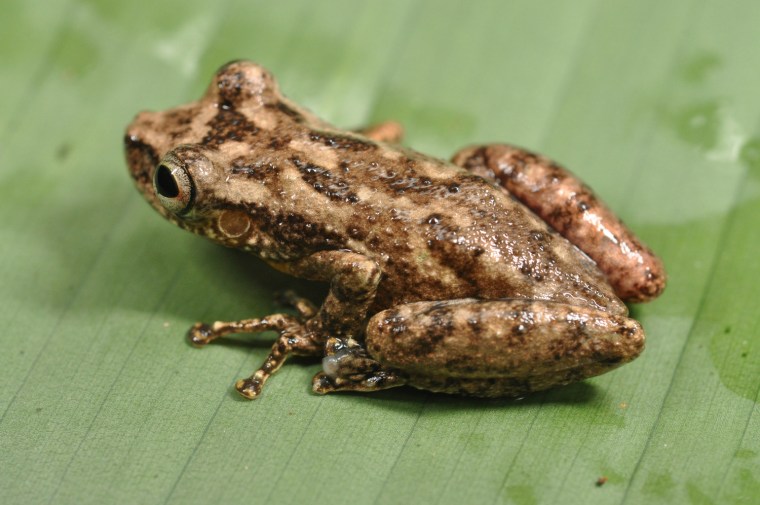
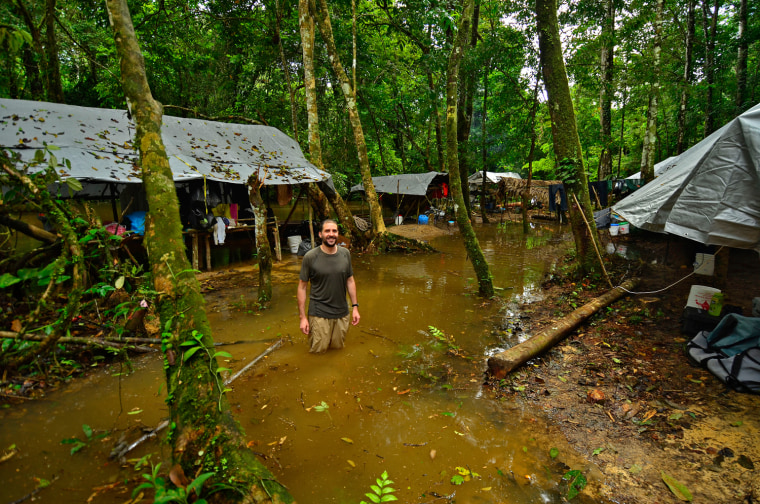
Water, water everywhere
Conservation International's Trond Larsen stands in the middle of the science team's flooded camp in southeastern Suriname. Unusually strong and long-lasting rain caused the Upper Palumeu River to flood its banks, completely inundating the camp and forcing the team to move sooner than planned.
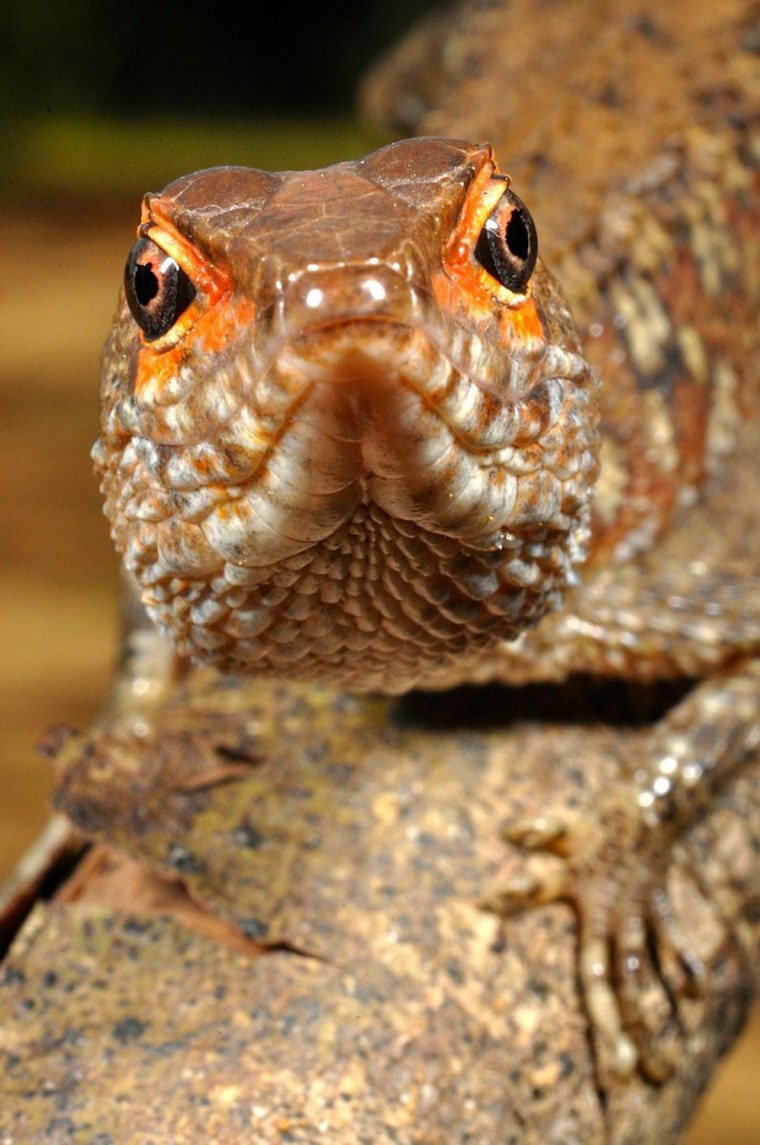
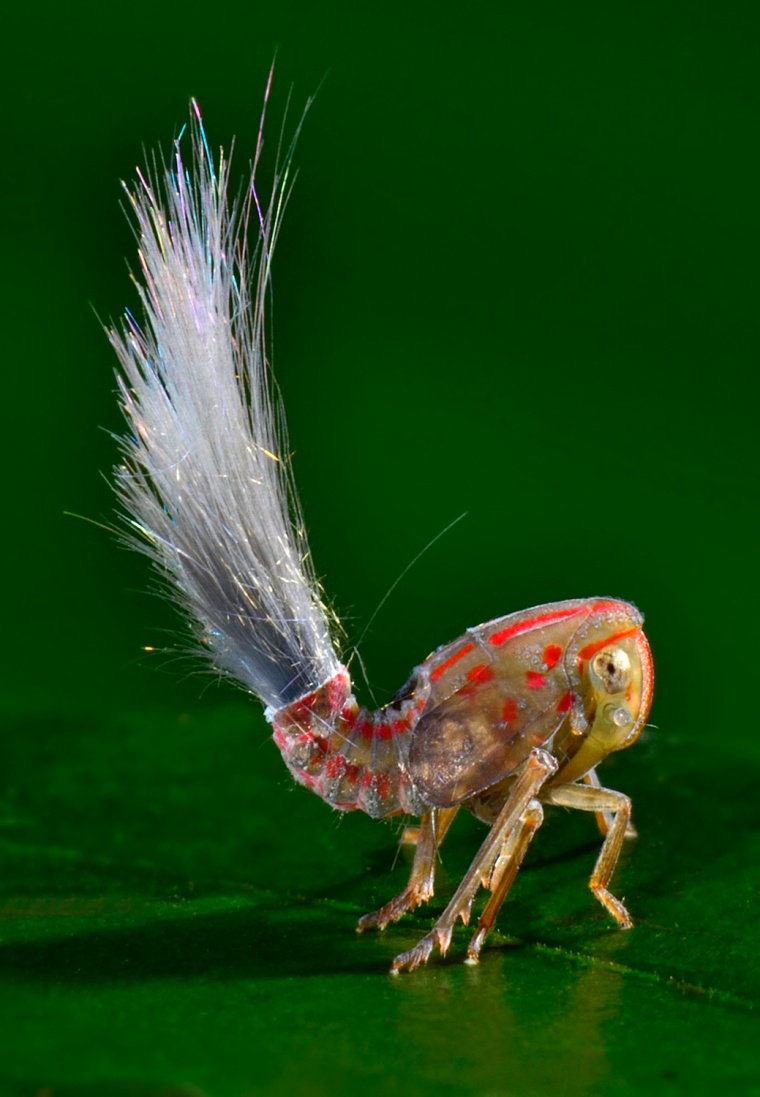
Clever disguise
Many planthopper species exude waxy secretions from the abdomen, and these sometimes form long strands, such as the strands seen in this photo. These strands may provide protection from predators: It could be that they fool the predator into attacking the wrong part of the insect, and the wax breaks off while the insect jumps to safety. The juvenile planthopper in this photo was less than a quarter-inch (5 millimeters) long, and exceedingly difficult to photograph.
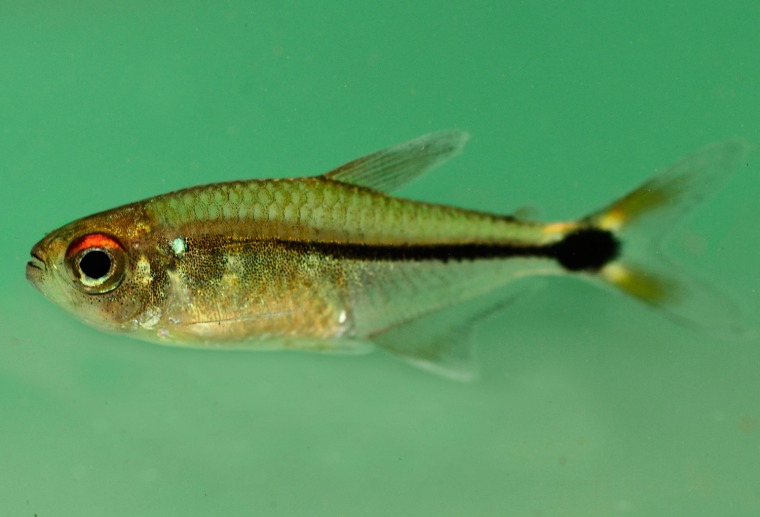
Shedding light on new species
This potentially new species of head-and-taillight tetra (Hemigrammus aff. ocellifer) is closely related to a fish much appreciated by aquarium enthusiasts. This is just one of 11 new fish species discovered on the expedition, including a South American darter and a three-barbeled catfish.
Find out more about Suriname's 'Tropical Eden' from Conservation International